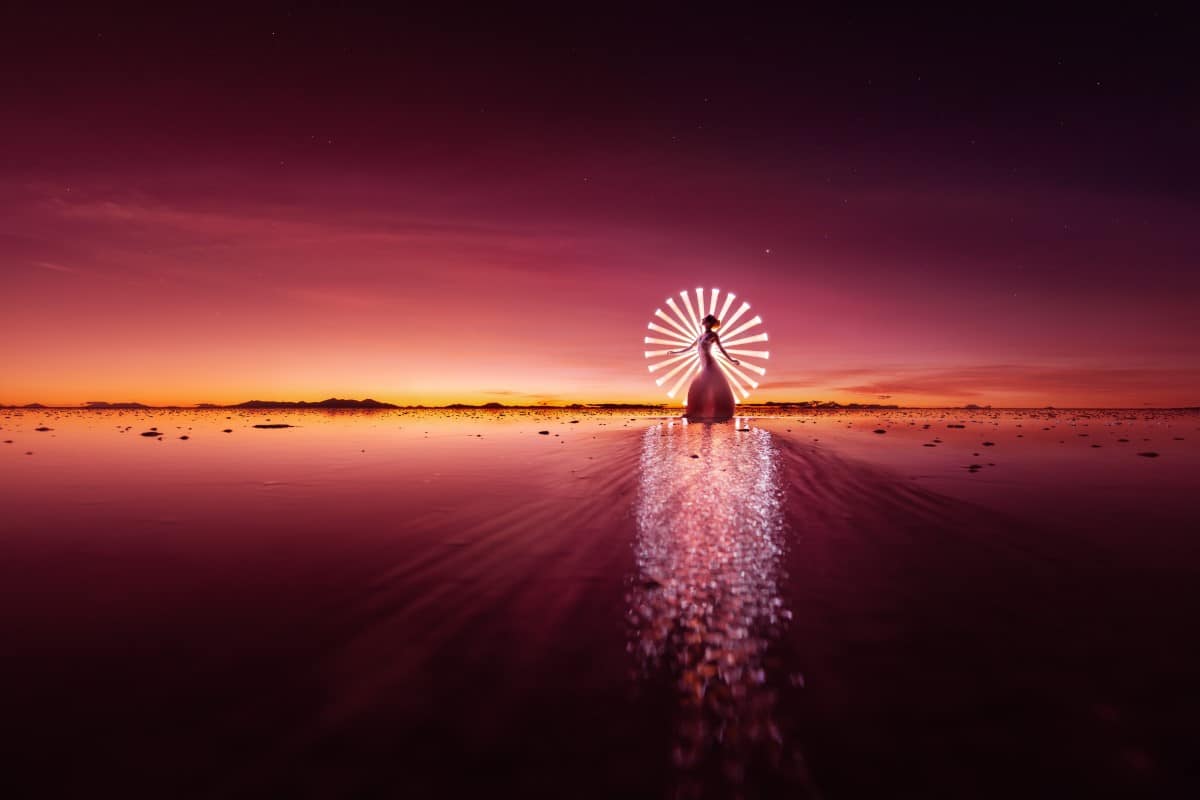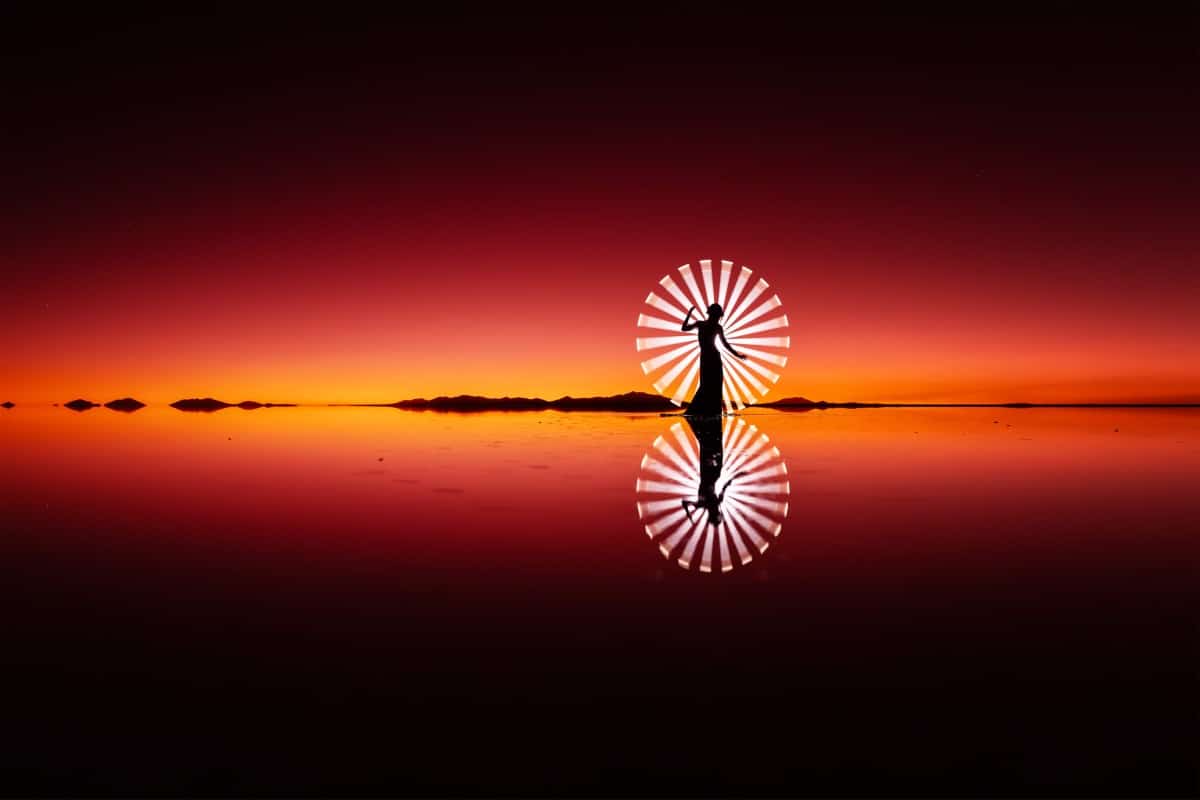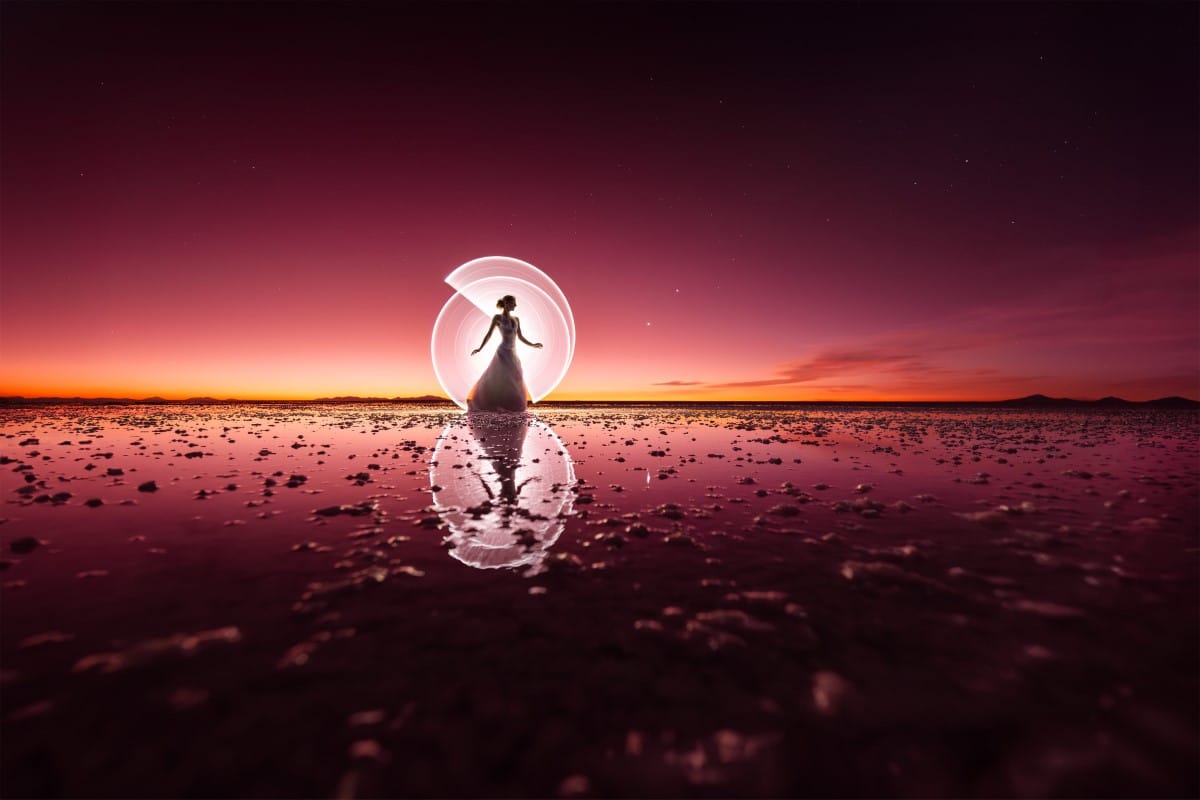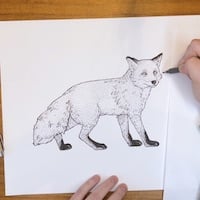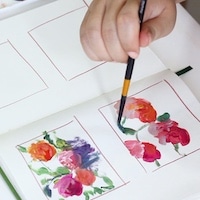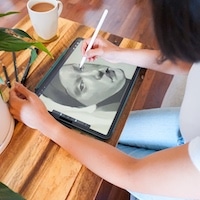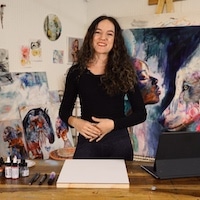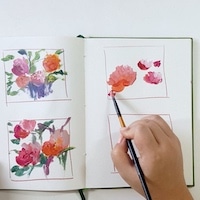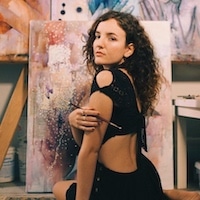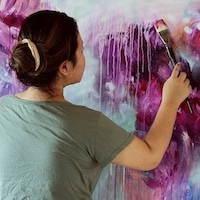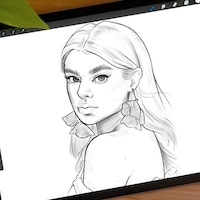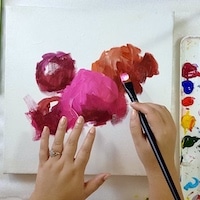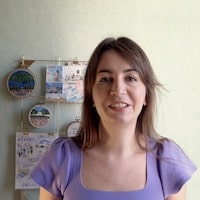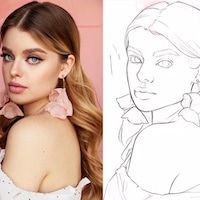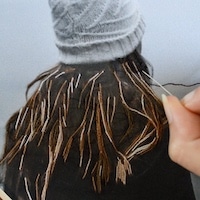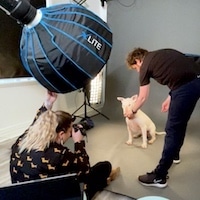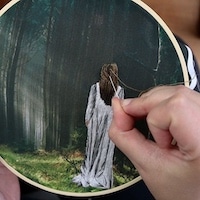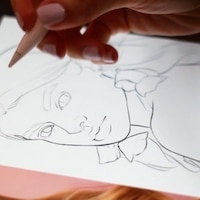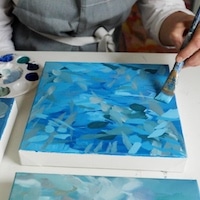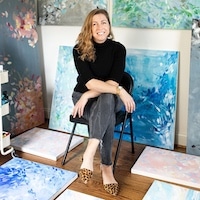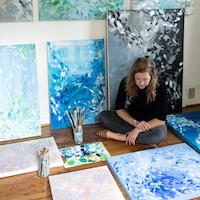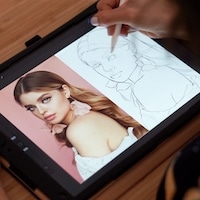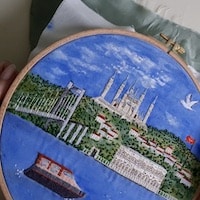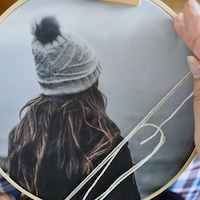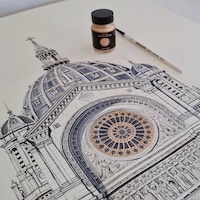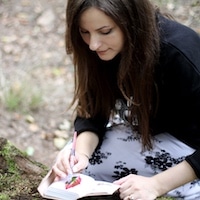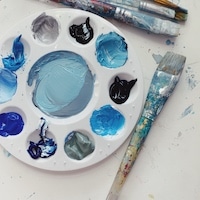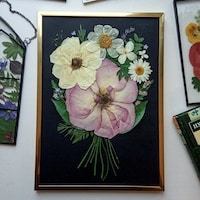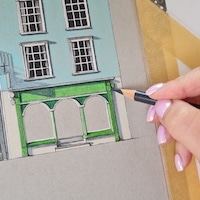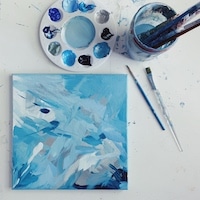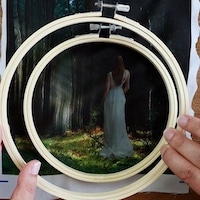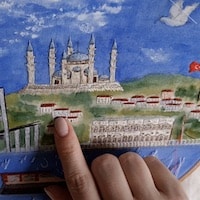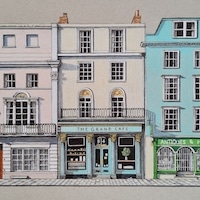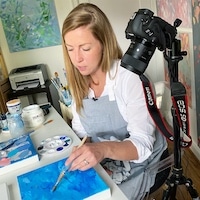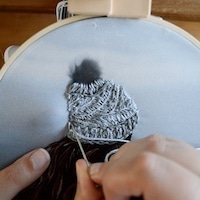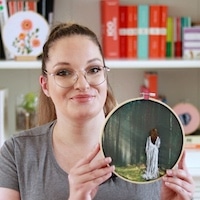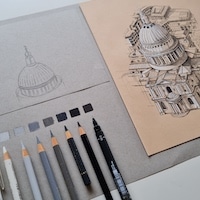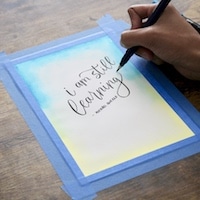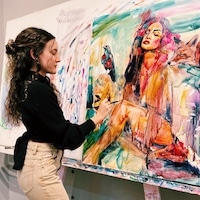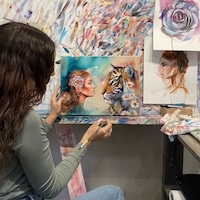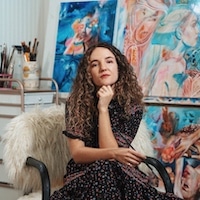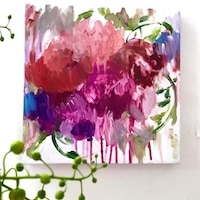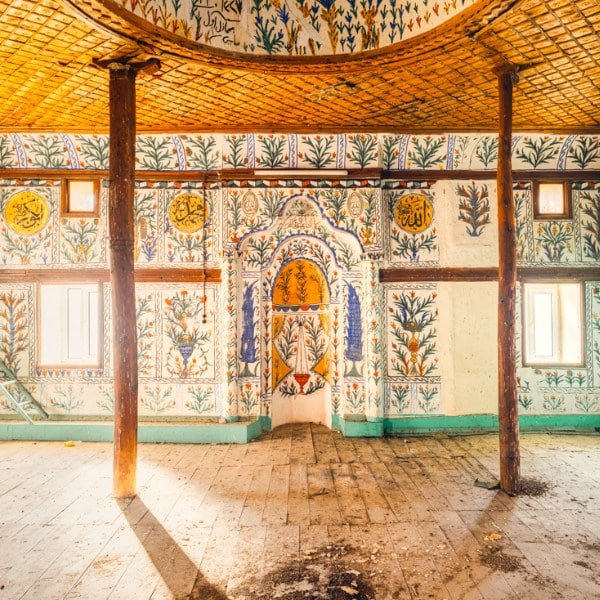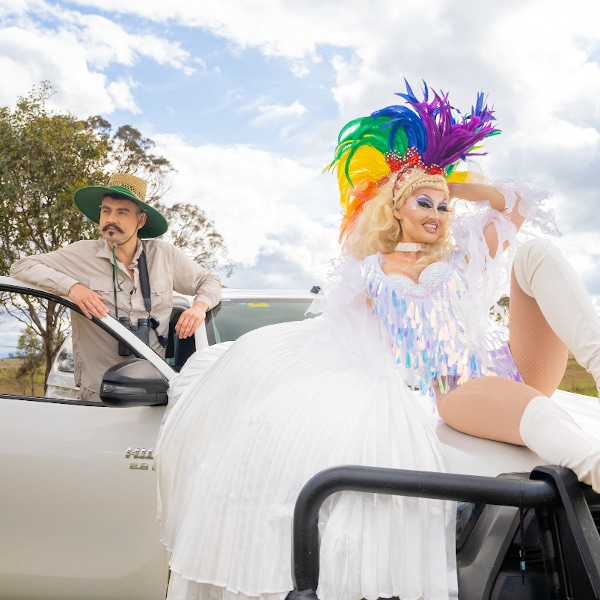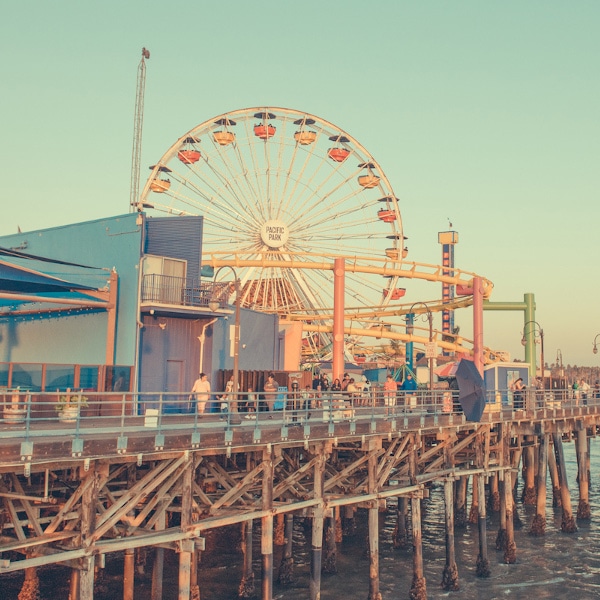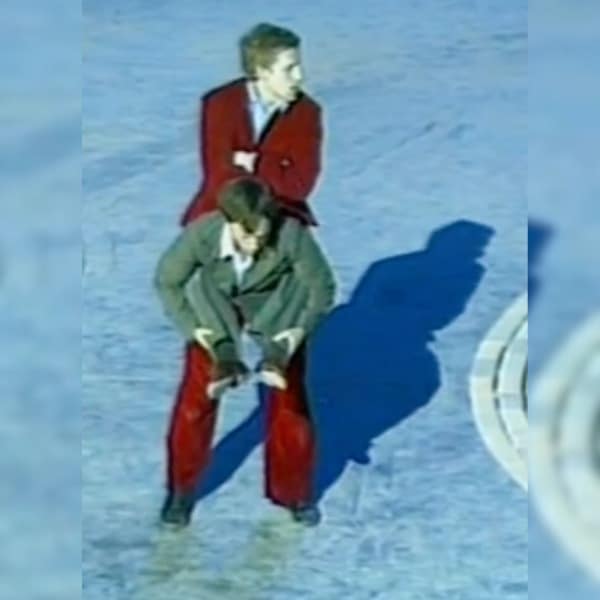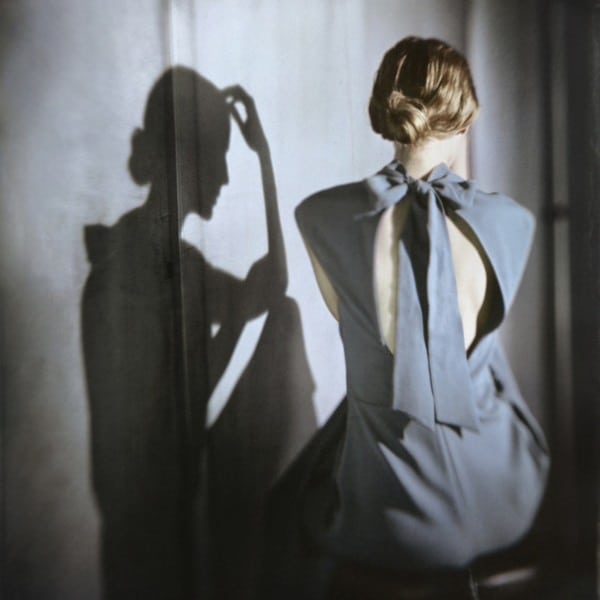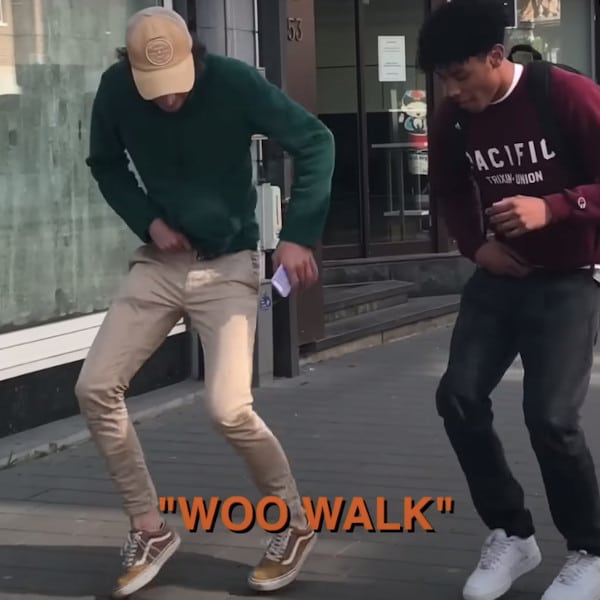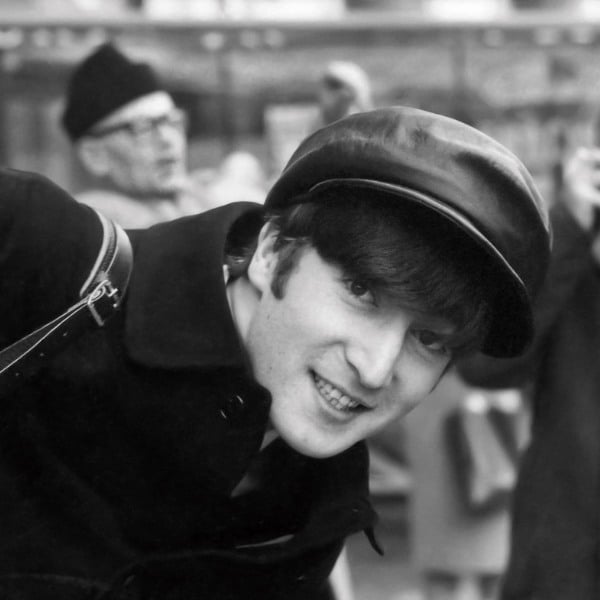The collaboration between visual artist Eric Paré and contemporary dancer Kim Henry continues as the duo traveled to Bolivia's Uyuni Salt Flats (Salar de Uyuni). While there, Paré executed more of his dazzling light paintings, which feature halos of light around Henry's body. Though this is the fourth time that they've used this incredible scenery as the backdrop for their work, they were in for a surprise this time around.
Instead of the typical blue, the skies were stunning hues of reddish-pink and orange, likely caused by particles left in the air from the underwater volcano that exploded near Tonga in January 2022. Paré and Henry made the most of the unique situation, allowing them to create light paintings that were completely different from those previously captured at the salt flats.
Though people may be quick to assume the images are the work of Photoshop, that couldn't be further from the truth. In fact, one of Paré's favorite aspects of the work is that he's not simply a photographer behind the camera, but an active participant in the scene.
“I am in the frame, actively participating in the creation by crafting the light by hand around my subject,” he explains to My Modern Met. “There's something very satisfying in this as the creative process involves capturing the whole scene while making sure the light-painting intensity blends well with everything. It's about having a nice light shape, but also about lighting up my subject all in one take. There are no other sources of light involved. The only source of light is the one in my hand.”
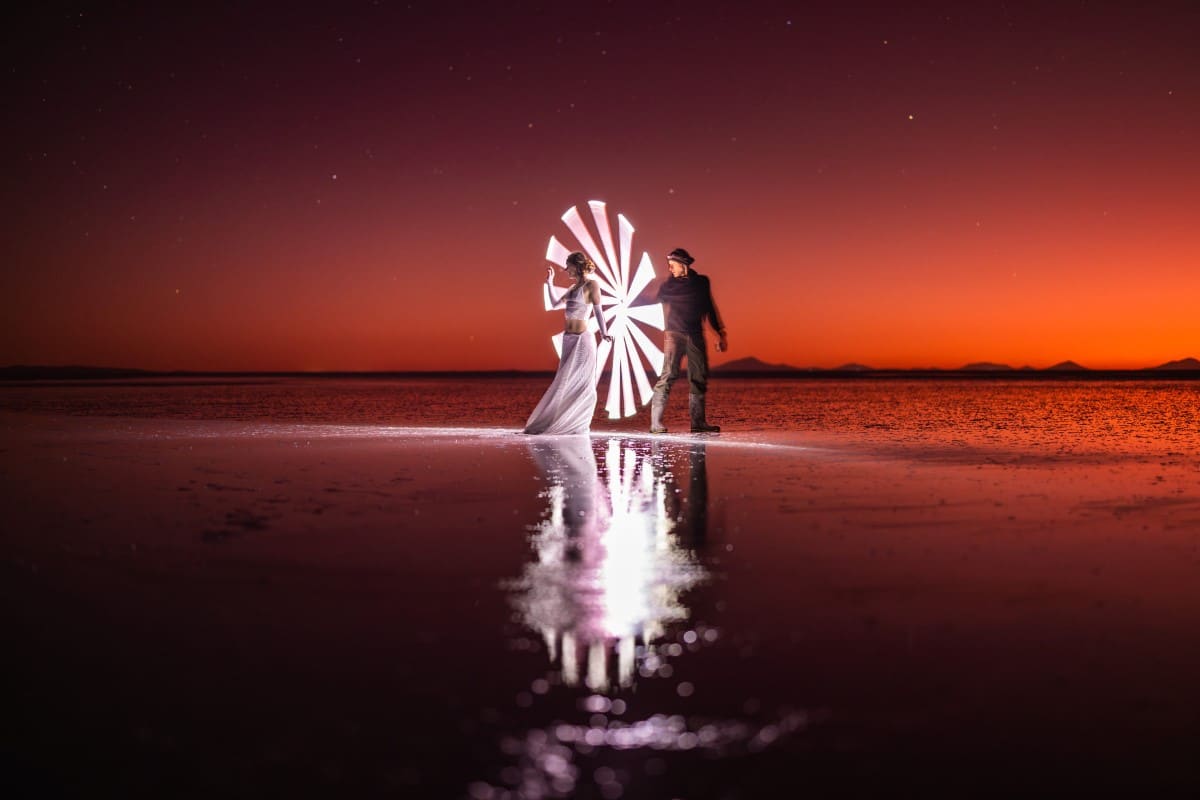
The process is one based on faith and chance, as it's impossible to know the final outcome until the image has been captured. As Paré and Henry have collaborated for years, they can lean into their instincts. The trust in their partnership is evident in the final images, with Henry striking regal poses as Paré bathes her body in light.
Created over the course of 19 evenings, the magical collection of images strikes up a sense of wonder in the viewer. The duo refers to their work as visual poetry and hopes that their light paintings spark a sense of wonder in others and get them to open up to both the reality and fantasy of the situation.
“We don’t approach creation as a capture of a specific moment in time. It is, but we usually aim for a sense of timelessness,” Paré shares. “In that sense, we don’t approach creation from a storytelling perspective. It’s an open page for the viewer to see a story if they want to, but we come from a place of wishing to feel things and being comfortable with the idea of not understanding intellectually why.”
“There is a lot of mystery and potential for imagination in what is not being said; what is not explained or shown,” he continues. “As an audience and a creator, this is what we enjoy—that space for the individual experience and connection to a piece.”
Visual artist Eric Paré and dancer Kim Henry traveled to Bolivia's Uyuni Salt Flats to create incredible light paintings.

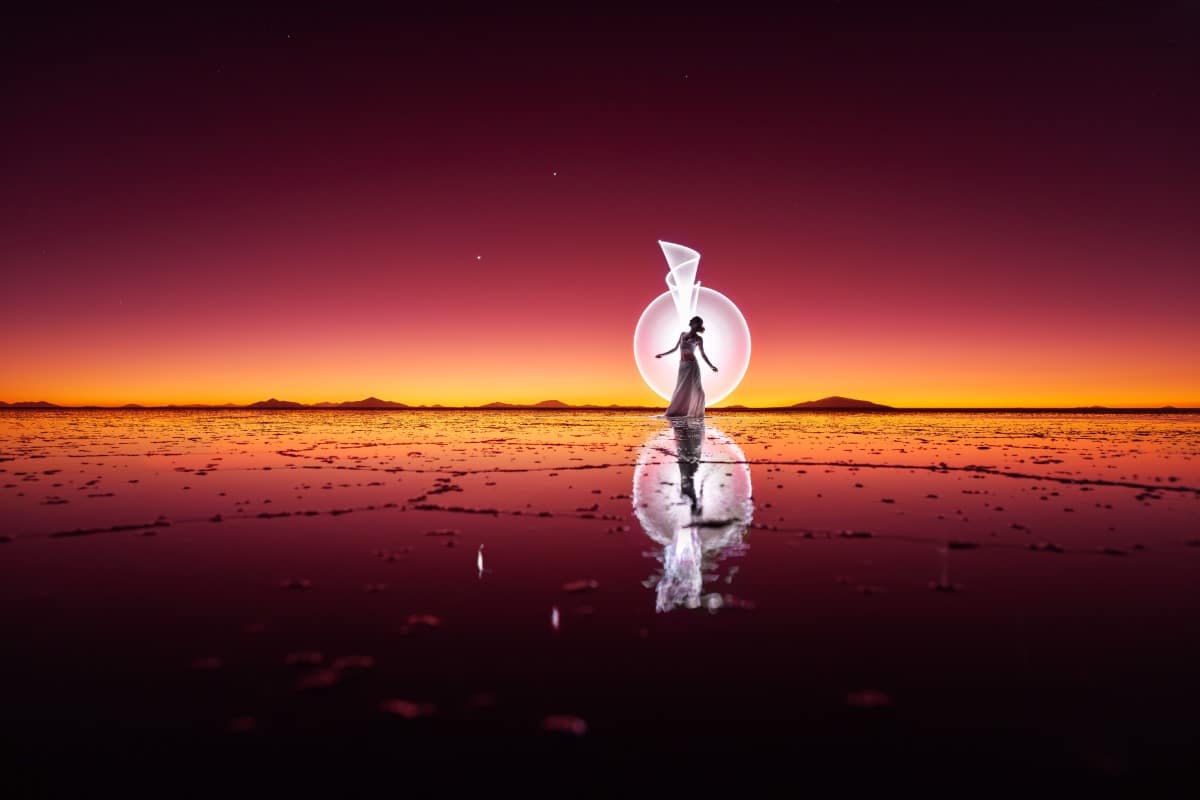
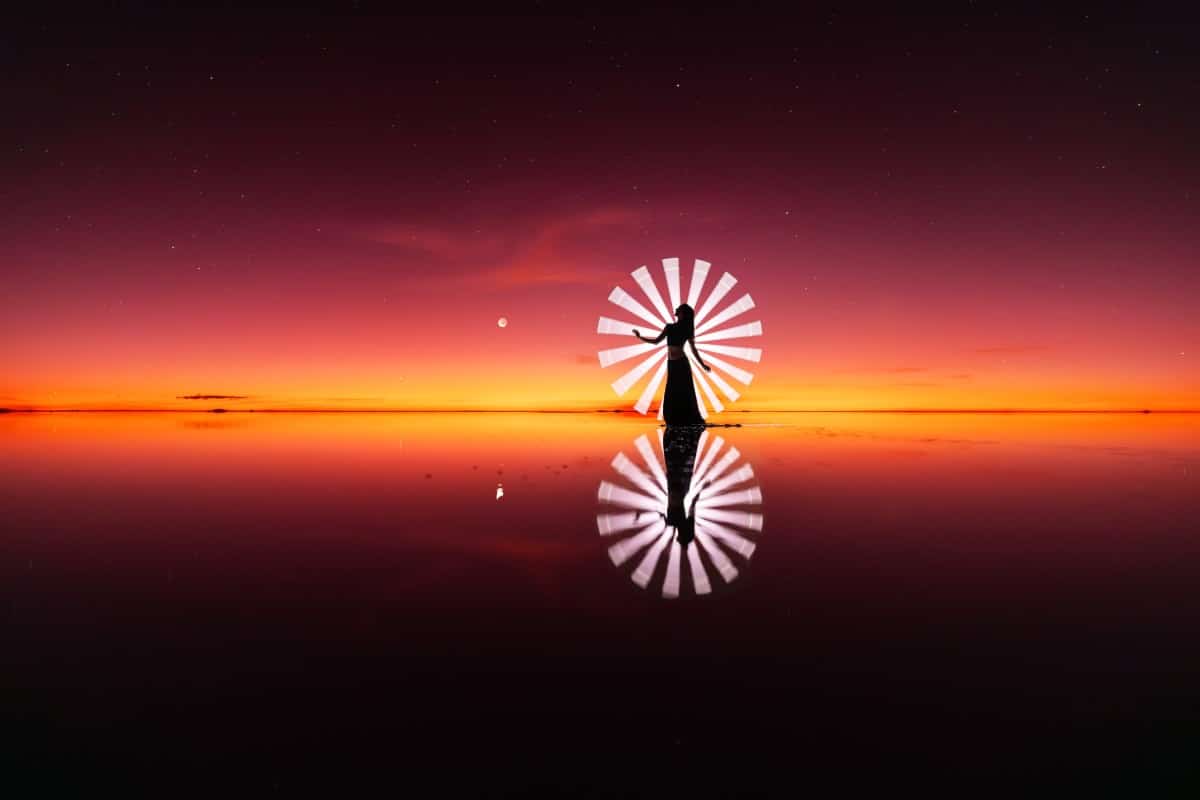
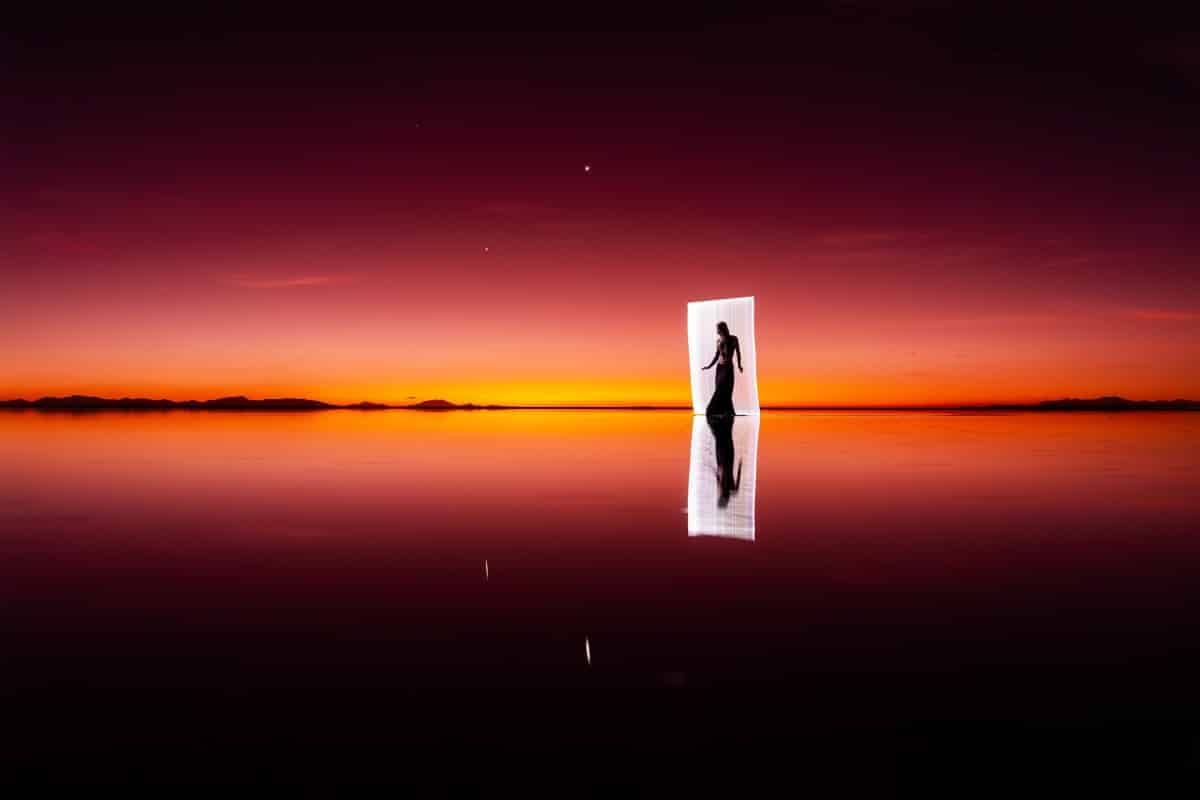
The halo of light surrounding Henry is created on-site by Paré; no Photoshop needed.
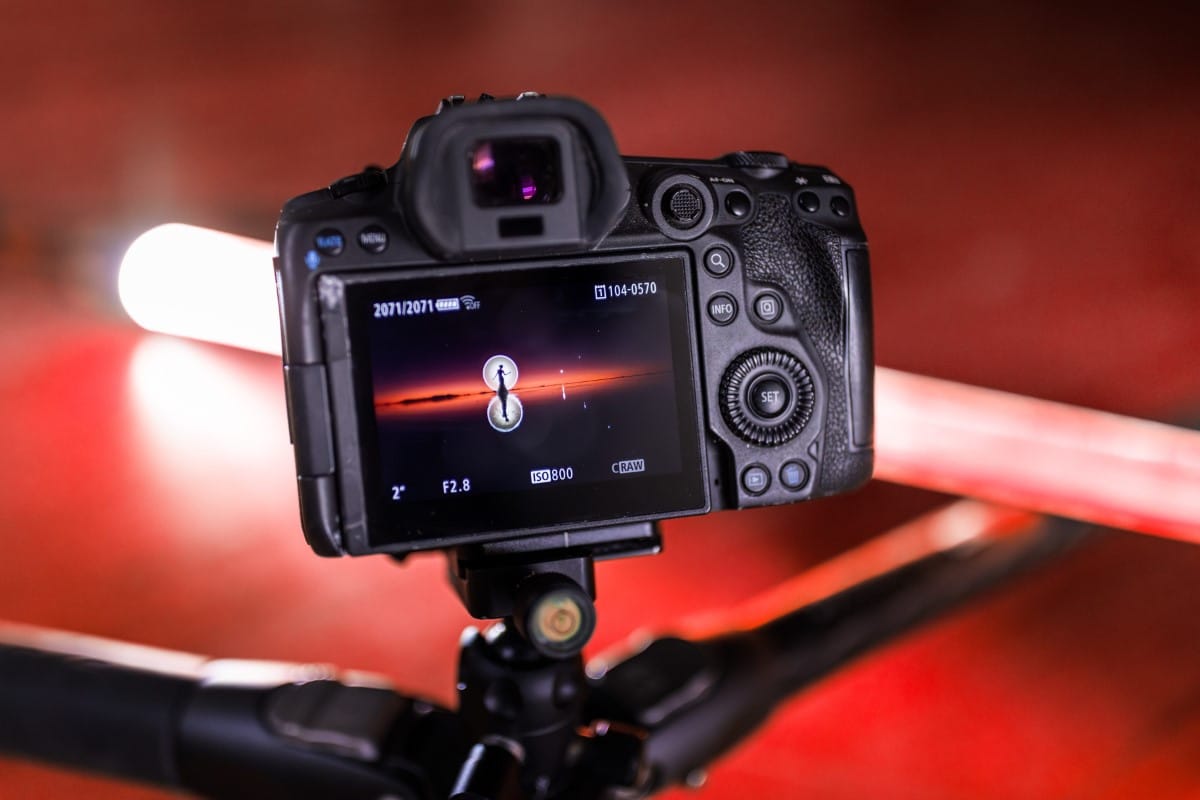
While the duo had visited the site previously, this time, the sky was a stunning shade of pink and orange.
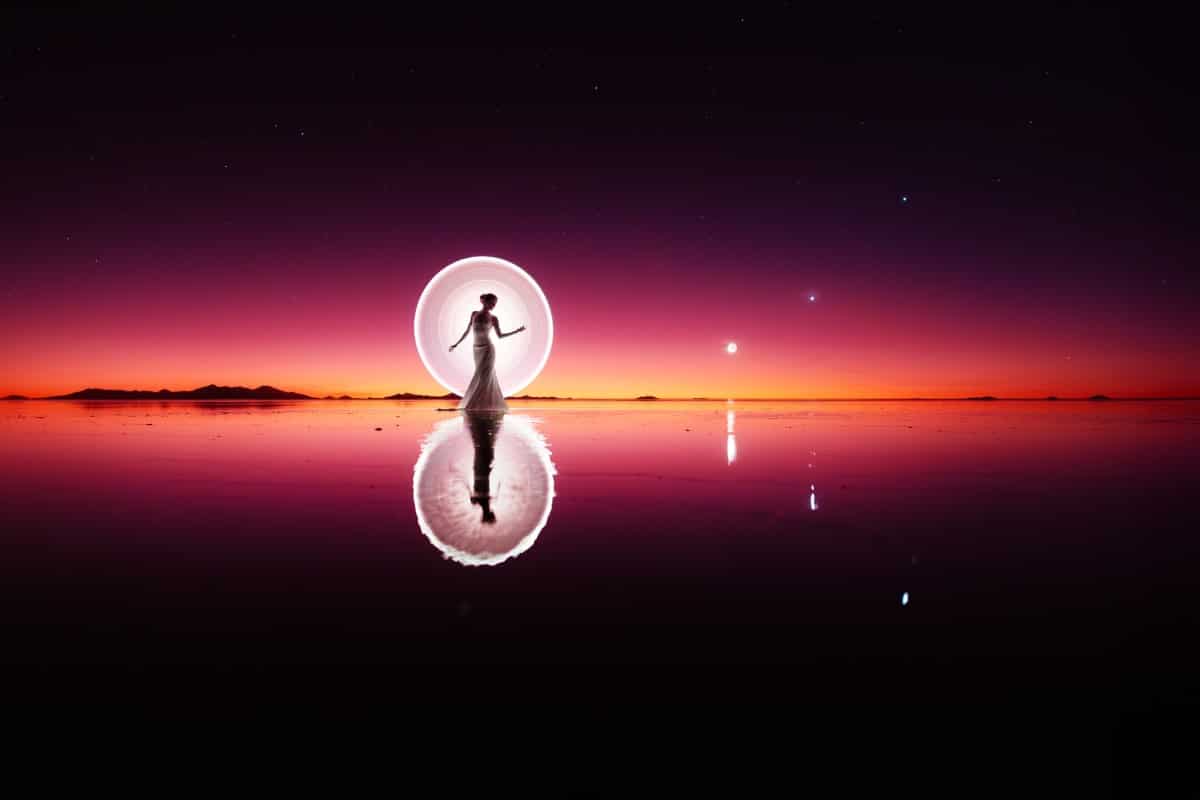
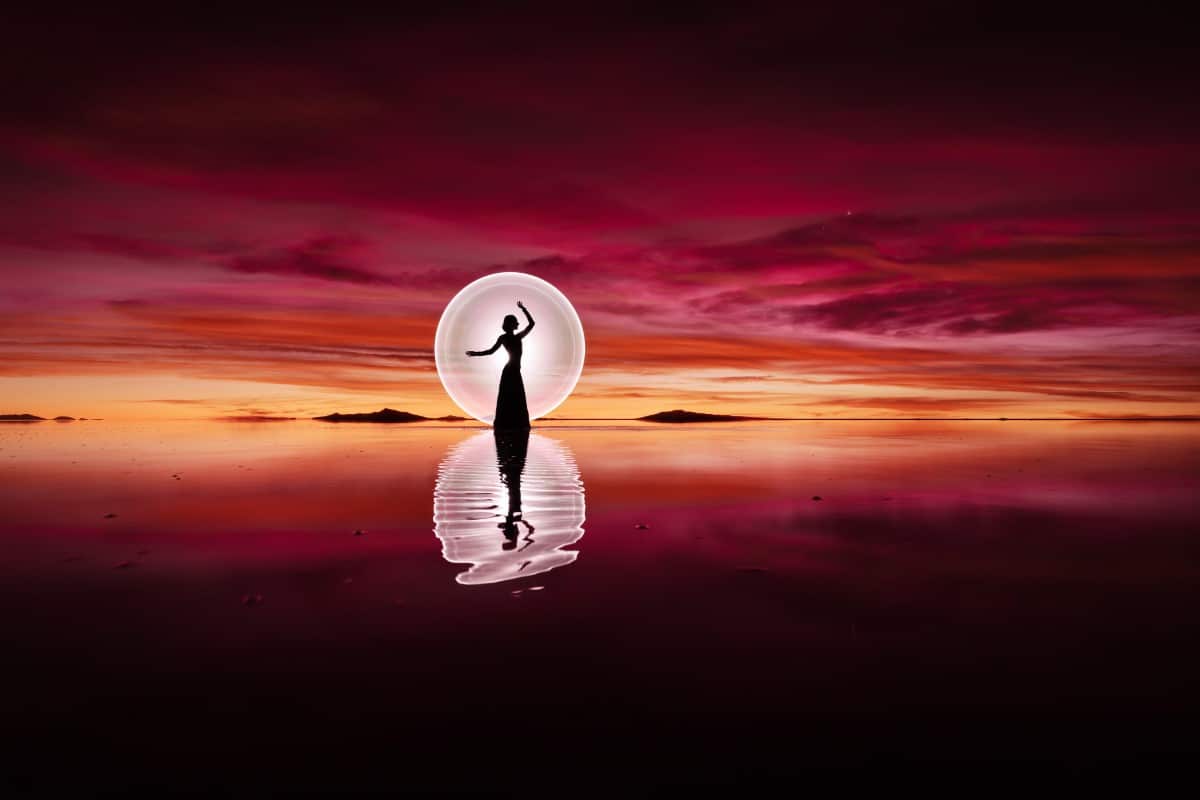
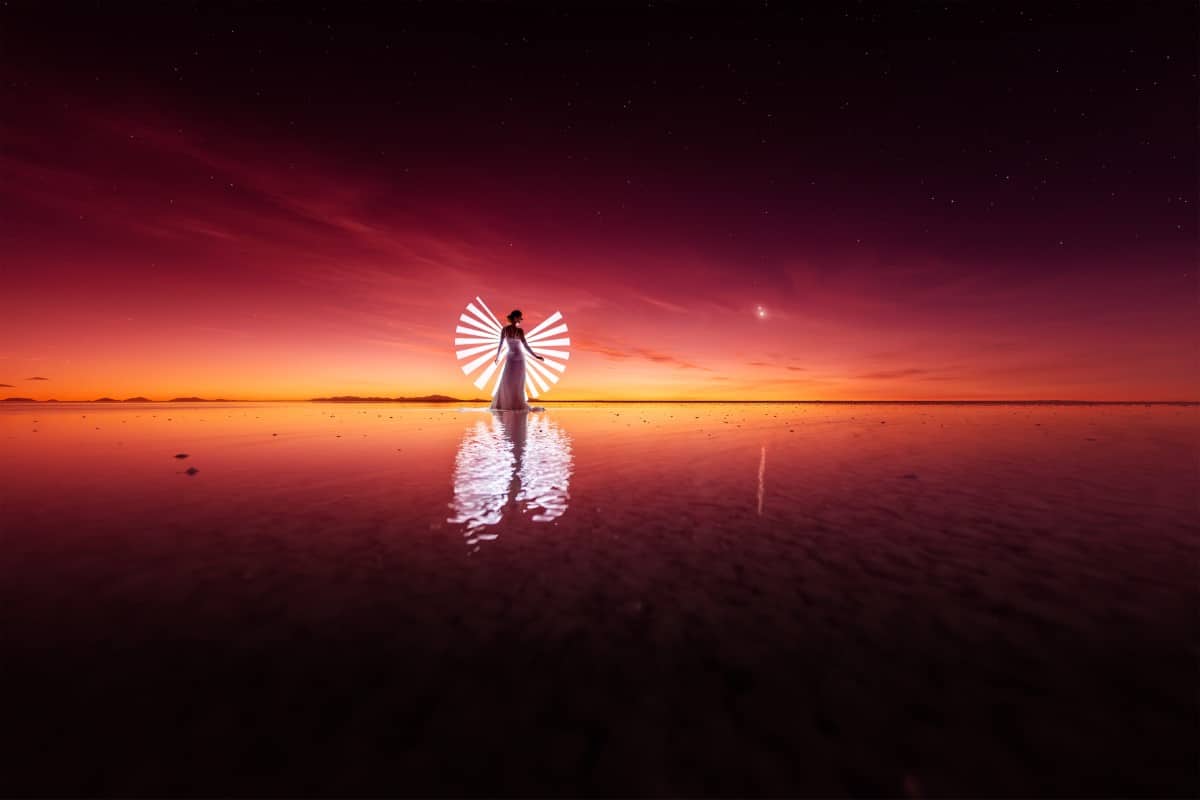
They later realized that this was due to particles left in the air by the 2022 underwater volcano explosion in Tonga.
